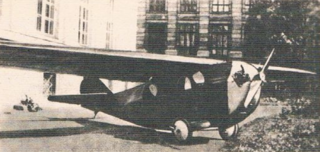
The RWD 1 was a Polish sports plane of 1928, a single-engine high-wing monoplane constructed by the RWD design team.

The PWS-50,(PWS - Podlaska Wytwórnia Samolotów - Podlasie Aircraft Factory), was a prototype Polish single-engine mid-wing monoplane sports aircraft of 1930, constructed by Podlaska Wytwórnia Samolotów.
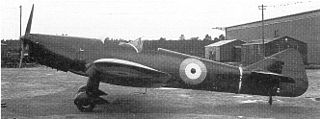
The Miles M.15 was a 1930s British single-engined monoplane trainer aircraft with two open cockpits, designed and developed by Miles Aircraft. Like other aircraft constructed to the official specification, it failed to meet the performance requirements, and only two were built.
The Koolhoven F.K.57 was a twin-engined, gull-winged monoplane built in the Netherlands as a personal transport for the Director General of Royal Dutch Shell. Only one was made, flying chiefly in Europe in the year before World War II, but destroyed when Germany invaded the Netherlands in May 1940.
The Couzinet 10 Arc-en-Ciel ('Rainbow') was built as a first example of the three-engined, aerodynamically refined, cantilever low wing monoplane designer René Couzinet thought offered the safest long range passenger transport, for example on the South Atlantic route. Only one was completed, though other, similar aircraft of different sizes and powers followed.
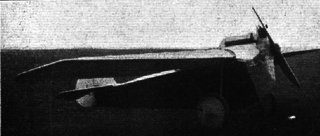
The Carley C.12 was a small Dutch single seat sporting monoplane from the 1920s. There were several developments but only small numbers were produced.

The Pander E was the first indigenous Dutch training aircraft, used by clubs and also privately owned. A two-seat, single-engine biplane, 17 were built in the Netherlands from 1926 with engines of increasing power.
The Bonomi BS.19 Alca was a single seat, tractor configuration motor glider, designed and built in Italy shortly before World War II. It had an unusual retractable undercarriage used only for take-offs. Only one was built.
The F.V.D. Doris or Dresden Doris, later known as the Akaflieg Dresden D-B2 Doris, was a monoplane glider built in Germany in 1922. It was unusual in having wings which could independently adjust their angles of attack, a feature intended to increase the energy acquired from gusts of wind.

The 1923 Feiro I was the first Hungarian designed and built civil transport aircraft, modified in 1925 by an engine change into the Feiru Daru (Crane). Neither was a commercial success.

The Albert TE.1 was a single seat cantilever parasol wing monoplane, wood framed and skinned and built in France in 1926. It made some notable long flights, set a French altitude record for its class and proved a practical light aircraft.
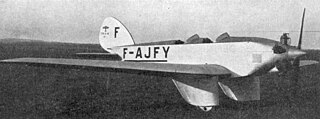
The Albert A-60 was a single engine, two seat, wooden sports monoplane designed and built in France in the early 1930s. Two were built and flown with three different engines.
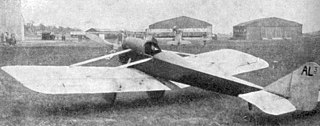
The Lachassagne AL 3 was an experimental 1920s French aircraft designed to test a camber-changing wing meant to extend speed ranges. It was flown only briefly but led to a second design with similar features.
The Caudron C.580 was a French advanced trainer aircraft intended to prepare pilots for the new low wing monoplane fighters of the mid-1930s. It did not go into production and only two were built.

The Mauboussin M.112, M-12 or Mauboussin M.XII was originally called the Peyret-Mauboussin PM XII and was renamed when Mauboussin founded his own company in 1931, ending his partnership with Louis Peyret. It was a French, single-engine, two-seat, low cantilever wing touring monoplane. At least six were built.
The Peyret Avionette was a low power, single seat French monoplane which won several first-place prizes at the Congrès Experimental contest of 1923.

The parasol wing, single engine Udet U 8, sometimes referred to as the Limousine, was a three-seat commercial passenger transport designed and built in Germany in 1924. Five were produced and were used by German airlines until about 1928.
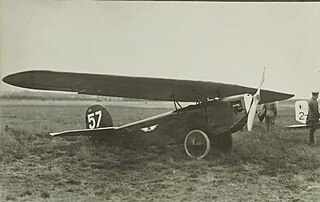
The Udet U 7 Kolibri (Hummingbird) was a single engine, single seat, parasol wing light aircraft, designed and built in Germany in the mid-1920s. Though they had some competition success and set an unofficial lightplane duration record, only two were produced.

The SABCA Demonty-Poncelet monoplane, Demonty-Poncelet limousine or SABCA-DP was a Belgian light aircraft first flown in 1924. It had two comfortable side-by side seats in a glazed cabin. Though it had competition successes in 1924 and 1925, it did not go into production.
The MIP Smyk, MIP from the initials of its Polish designers with Smyk meaning Brat or Kid, was an aerodynamically refined motor glider designed and built at Warsaw Technical University from 1935.














